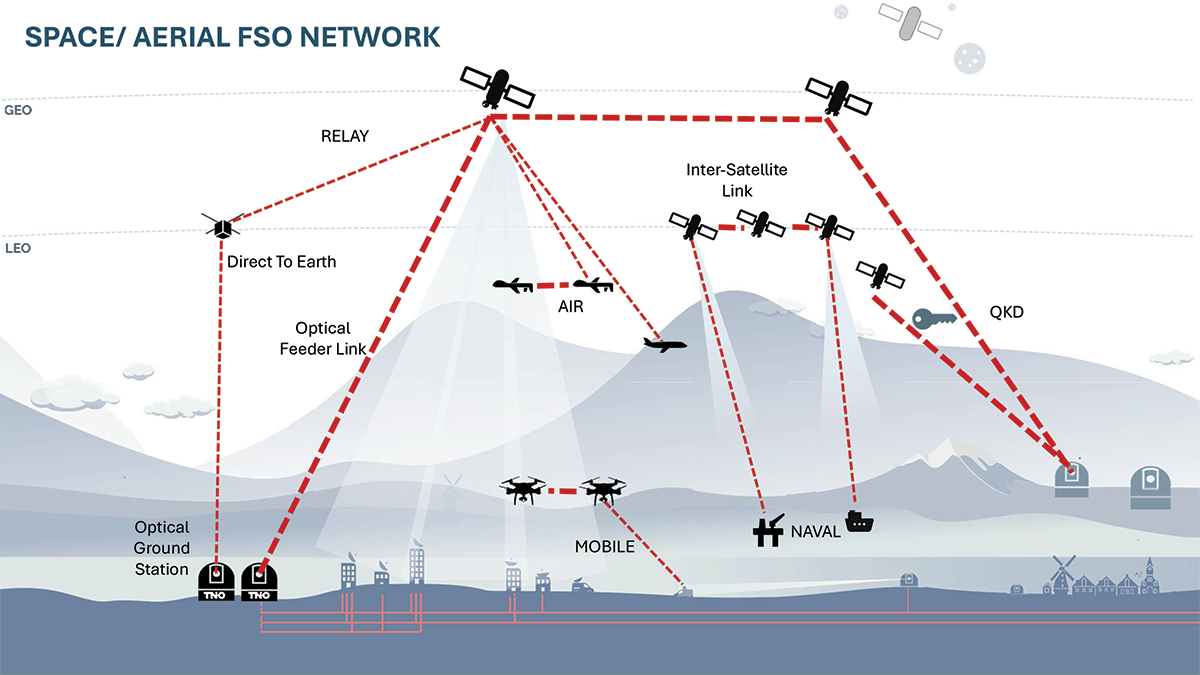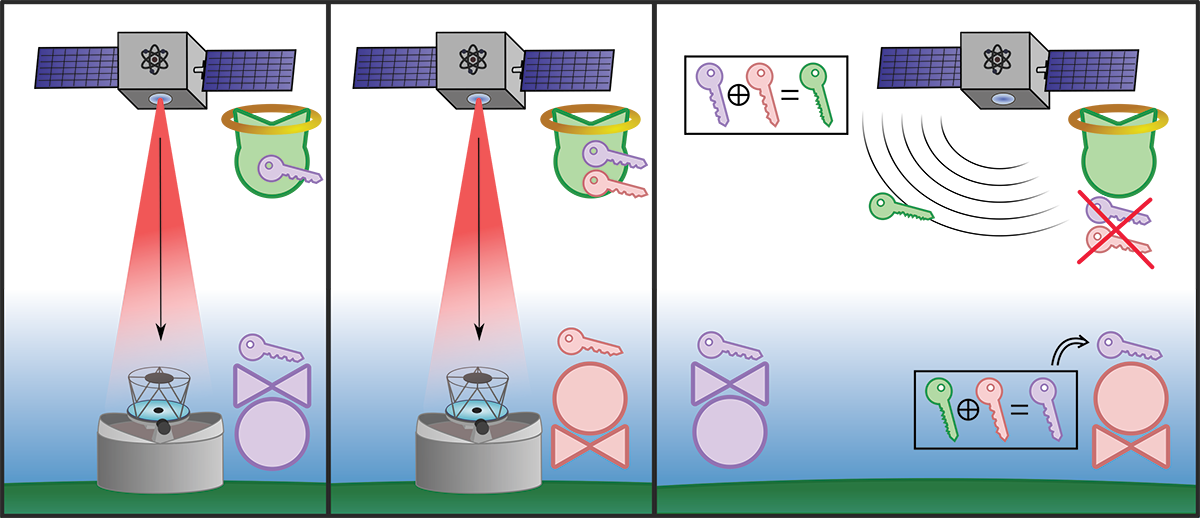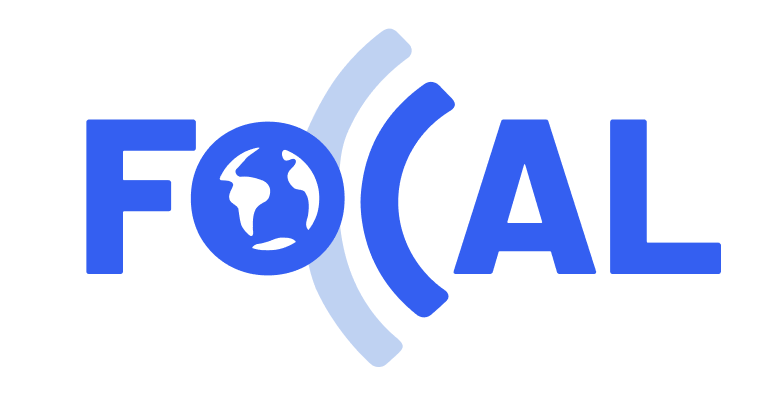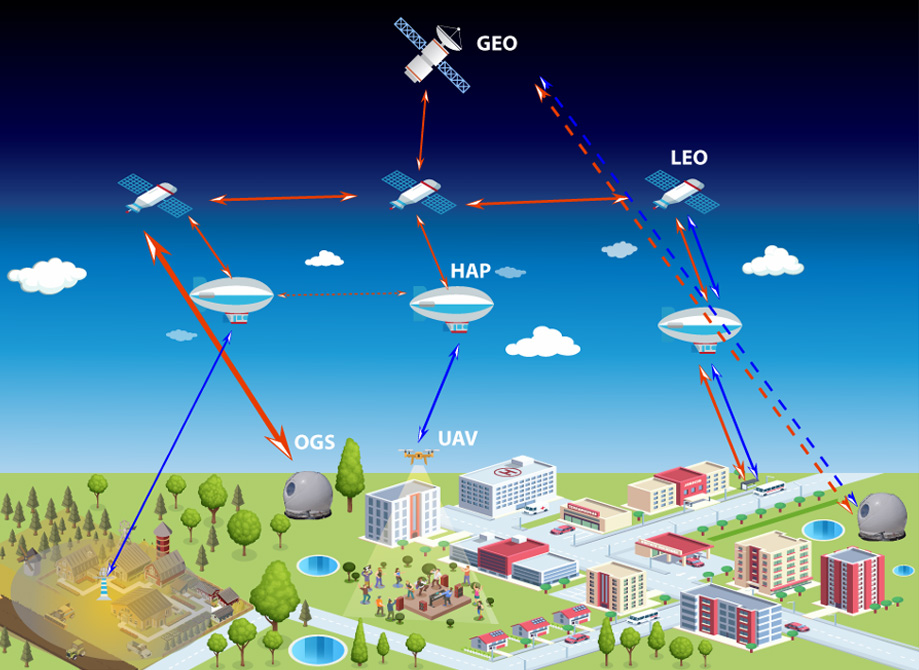Work Packages
Free-space Optical Communications for Aerial-sateLlite networks
FOCAL is organized into six Work Packages (WP) with distinct objectives that are interconnected as shown in illustration bellow.
WP6: Exploitation Dissemination & Outreach
Scientific publications
Standardization
Experimental demonstration
Workshops
Webinars
Patent applications
WP2: Network Architecture Design
Multi-layered space network architecture design
AI-based Resource Management
Network Slicing for different services
Effective cachig to minimize latency
End-to-End performance analysis
QKD network architecture
WP3: Resilient FSO Networks
Adaptative FSO link design
Highly sensitive receivers
Reconfigurable intelligent surfaces
Integrated Sensign and Communications
Software-defined approach
Multi-techinology link design
WP5: Doctoral Training
Technical and soft skills
Hands-on professional skills
Network optimization
Optical design
Satelllite technologies
Quantum cryptography
WP4: Quantum-Secure Network
Multi-user QKD satellite network with trusted relays
Dual-functionality quantum-classical link design
Imperfections and pratical considérations
Data-driven satellite QKD network analysis
Data-driven QKD network optimization
WP1: Management
Supervisory Board
WP leaders
DR representation
Advisory Board
Training coordination
Project Management
Work package WP1 – Project Management
WP Leader: École Centrale Méditerranée
Focus: This WP focuses on the management and coordination of the FOCAL project. Its objectives are to ensure the Project progresses according to the plan, and to implement the actions necessary for recruiting and assisting the Doctoral Candidates.
Work package WP2 – Network Architecture Design for Enhanced Connectivity
WP Leader: AALTO University
Focus: This WP focuses on designing a multi-layered non-terrestrial network (NTN) architecture that uses various space and aerial platforms (LEO, MEO, GEO satellites, HAPs/UAVs) to complement terrestrial systems via free-space optical (FSO) links. The aim is to support both classical and quantum communications, ensuring high availability and reduced latency compared to solutions based solely on radio links.
Challenge:Current NTN approaches typically involve a few GEO satellites with continuous but higher-latency connectivity or larger constellations of LEO satellites offering shorter latency but intermittent ground contacts. HAPs and aircraft/UAVs can also provide high-capacity shorter-range connections. By combining these layers, NTNs can adapt to fluctuating user demand, leveraging each platform’s unique altitude, coverage, and mobility characteristics. Effective resource allocation and networking algorithms are essential to meet diverse QoS needs and ensure resilient, mesh-based connectivity.
Planned Activities: Building on these principles, WP2 will refine and evaluate an integrated NTN design, considering platform configurations and traffic demands. The proposed architecture will include mechanisms for flexible resource management, efficient service provisioning, and compatibility with both classical and quantum technologies. End-to-end performance assessments will validate the robustness of this multi-layered approach, supporting enhanced connectivity while complementing terrestrial networks.
Work package WP3 – Resilient Space/Aerial FSO Networks
WP Leader: Nederlandse Organisatie Voor Toegepast Natuurwetenschappelijk Onderzoek (TNO)
Focus: This WP aims to achieve resilient, high-speed space/aerial free-space optical (FSO) links that remain reliable despite mobility, differing altitudes, and adverse atmospheric conditions.
Challenge: As radio-frequency (RF) bands face increasing congestion, FSO technology offers an attractive path for next-generation high-throughput satellite communications. However, ensuring robust operation under atmospheric turbulence, pointing errors, and cloud blockage—particularly with fast-moving LEO satellites—remains a key concern. These factors can significantly impact both upstream and downstream performance, making advanced mitigation strategies critical.
Planned Activities: The WP will develop high-throughput optical links and robust strategies against atmospheric and mobility-related impairments, leveraging techniques in signal processing, adaptive transmission, and software-defined system design. The ultimate goal is to ensure reliable connectivity for data-intensive applications, while maintaining flexibility, scalability, and efficiency in challenging environments.

Work package WP4 – Quantum Secured Space/Aerial Networks
WP 4 leader: Deutsches Zentrum Fur Luft – Und Raumfahrt (DLR)
Focus: The goal of this WP is to foster research and development fundamental of Quantum Key Distribution (QKD) systems for Non-Terrestrial Networks (NTN). The main goal is the analysis of the secret key throughput based on theoretical models and experimental data, the investigation of space/aerial nodes supporting both high-rate Free-Space Optical (FSO) classical communication and QKD, and the study of advanced QKD protocols for different NTN use cases.
Challenge: Quantum communication, by its very nature, is based on the transmission of very weak signal, at the single-photon level. Together with the large losses present in satellite-to-ground links, due to the long communication distance, results in systems that require specialized high-performance equipment. Significant developments are required to increase the level of maturity of the enabling technologies: on the optical side these include specialized telescopes and laser communication terminals, pointing, acquisition and tracking support systems, adaptive optics and high-efficiency fiber coupling modules; on the QKD side, high-throughput quantum random number generators, specialized control electronics and high-efficiency single-photon detectors are required.
Planned Activities: In this WP multi-user QKD networks will be designed and optimized. Co-existence and joint design of classical and quantum links will receive particular attention. Keys generated by the developed QKD network will be used to enhance the security of the NTNs developed, considering both conventional and advanced QKD protocols. Furthermore, a proposal for practical transceiver front-end will be developed and trade-offs based on wavelength, detector technology, coupling technique, etc., will be carried out.

Work package WP5 – Doctoral Training
WP Leader: Friedrich-Alexander Universität Erlangen-Nürnberg (FAU)
Focus: This WP focuses on the Doctoral Candidates training, teaching and guidance. It deals with the organization of the supervision and of Doctoral Candidates training programme.
Planned activities: Different activities are covered by the Work Package.
- The preparation of training materials: Courses, secondments in private sector and universities, simulations and experimental skills;
- The organization of events: Training schools, conferences, industrials days, etc.;
- The Monitoring, Assessment and evaluation of Doctoral Candidates’ progress: Assisting all supervisors in the Doctoral Candidates management, Over-seeing the career advancement of DCs, etc.
Work package WP6 – Exploitation, Communication, Dissemination & Outreach
WP Leader: École Centrale Méditerranée
Focus: This WP focuses on the exploitation, communication and dissemination of the research outcomes of FOCAL within the research and academic communities, industry, and standardization bodies.
Planned activities: This Work Package includes various activities regarding the promotion of the Project, including management of dissemination and communication activities and results exploitation and standardization activities.

